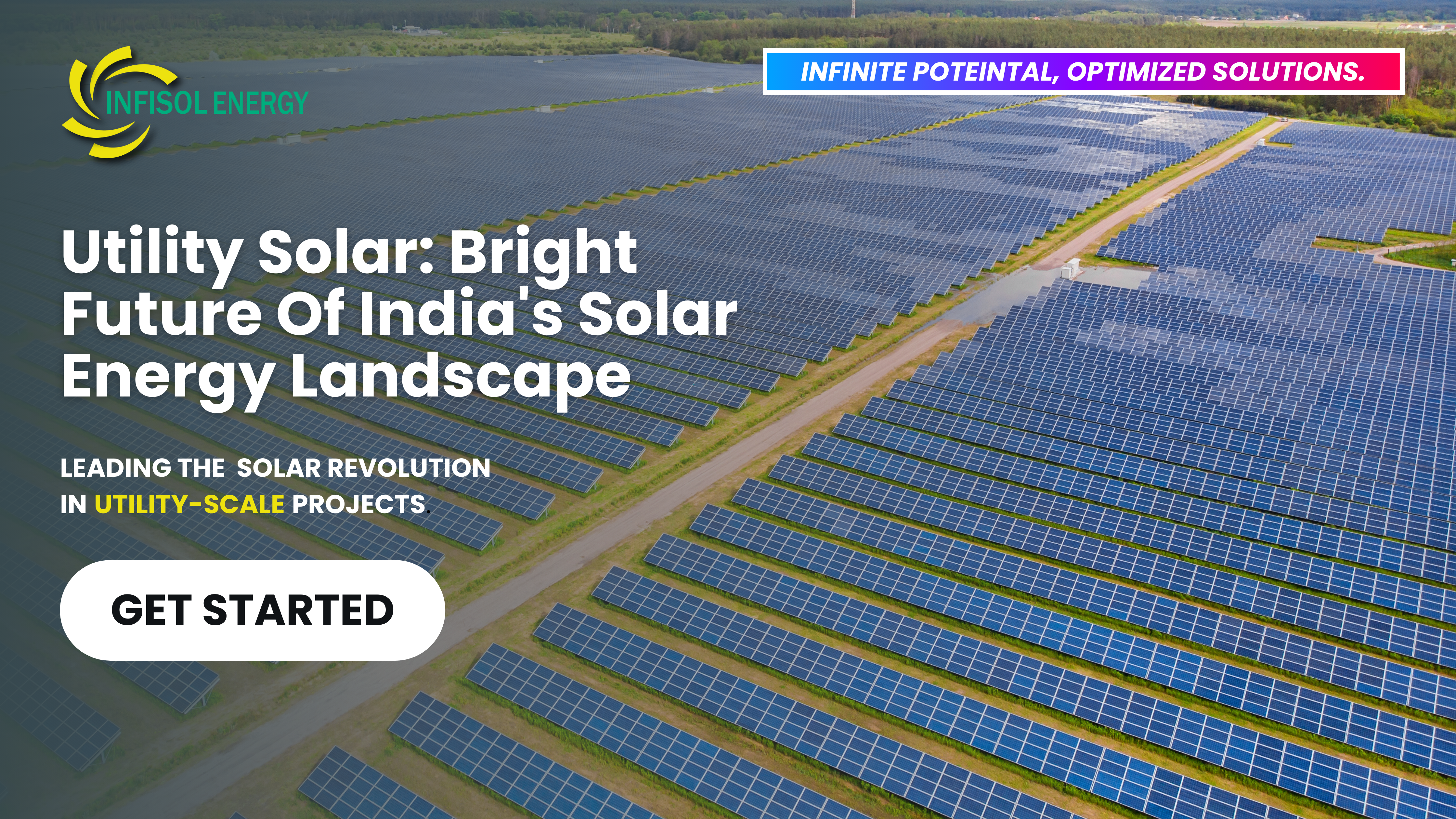
Table of Contents
1. Introduction to Utility Solar Services (Solar Park)
Discover India’s role in the global solar revolution as a leader in utility solar, open access, and solar park developments. With ambitious renewable energy goals and government initiatives, India is driving forward sustainable energy solutions to reduce carbon footprints and combat climate change. Explore how India’s solar energy journey is shaping a greener future with impactful utility solar services.
A. Solar Energy Outlook in India
India’s Role in the Solar Symphony
India ranks as the fourth-largest country globally in terms of solar power capacity, a remarkable achievement reflecting its rapid progress in renewable energy. Over the past five years, India’s installed solar capacity has seen an incredible surge, growing from 21,651 MW to 70,096 MW as of 2023. This expansion is driven by ambitious targets set by the government, including a goal of 500 GW of renewable energy by 2030. With policies like the Production Linked Incentive (PLI) scheme, India is accelerating domestic solar manufacturing and enhancing its solar infrastructure, contributing significantly to a sustainable global energy future.
B. Government Initiatives and Policies
The Indian government has launched several strategic initiatives to support and boost renewable energy, especially solar power:
- Production Linked Incentive (PLI) Scheme: This program aims to encourage domestic manufacturing of high-efficiency solar PV modules, creating a production capacity at the Giga Watt (GW) scale. The scheme’s first tranche brought in 8,737 MW, and the second tranche allocated 39,600 MW to 11 companies, with an investment of over INR 93,041 crore, leading to more than 100,000 job opportunities.
- Solar Park Scheme: Targeting the establishment of 50 solar parks with a total capacity of 38 GW by 2025-26, this scheme provides an infrastructure for large-scale solar projects. Currently, 11 parks with a combined capacity of 8,521 MW are complete, and an additional seven parks with 3,985 MW capacity are partially operational. These solar parks contribute to affordable energy generation and attract significant investments.
- PM-KUSUM: Focusing on decentralized solar power, this scheme aims to add 30.8 GW of solar capacity by 2026, with a specific emphasis on solar water pumps for agriculture. The program prioritizes the use of domestically manufactured solar components, further promoting local manufacturing.
Check out more from the G.O.I.- Development of Solar Parks and Ultra Mega Solar Power Projects | MINISTRY OF NEW AND RENEWABLE ENERGY | India
C. Achievements and Future Targets
India’s journey in renewable energy has been marked by impressive achievements and a clear vision for the future:
- Installed Capacity: As of May 2024, India’s total renewable energy capacity, including large hydropower, reached 193.57 GW.
- Renewable Energy Mix: This includes contributions from wind power (46.42 GW), solar power (84.27 GW), biomass/co-generation (10.35 GW), small hydro (5 GW), waste-to-energy (0.59 GW), and large hydro (46.92 GW).
- International Solar Alliance (ISA): Established in 2015, ISA promotes global solar energy adoption and aims to reach 450 GW of renewable energy capacity by 2030, drawing in $1 trillion in investments.
India’s goals for 2030 emphasize its commitment to a sustainable energy future:
- 500 GW Renewable Capacity: Achieve 500 GW of renewable energy capacity by 2030.
- 50% Renewable Energy Usage: Source 50% of its total energy needs from renewable sources.
- Carbon Emission Reductions: Reduce projected carbon emissions by 1 billion tonnes by 2030.
- Economic Carbon Intensity: Decrease the carbon intensity of India’s economy by at least 45%.
- Net-Zero by 2070: Strive to achieve net-zero carbon emissions by the year 2070.
D. Innovations and Investments
India’s renewable energy sector is gearing up for substantial growth, backed by innovative advancements and increased financial investment:
- Technological Advancements: The development of advanced energy storage solutions, grid enhancements, and high-efficiency solar PV modules.
- Increased Financial Support: In the Union Budget for 2023-24, the solar power sector received INR 7,327 crore, marking a 48% increase in funding from the previous year.
- Green Hydrogen Initiatives: India aims to produce 5 million tonnes of green hydrogen by 2030, which will be supported by 125 GW of renewable energy capacity, further establishing India as a leader in clean energy technologies.
Opportunities and Future in the Solar Energy Sector
India’s journey toward renewable energy highlights its dedication to combating climate change, securing energy independence, and promoting sustainable development. Through forward-thinking policies, technological advancements, and major investments, India is positioning itself as a global leader in the renewable energy sector. Utility solar services are central to this vision, providing the infrastructure necessary to achieve ambitious targets and drive India towards a future powered by clean, green energy.
With a clear path and a strong commitment to sustainability, India’s solar landscape is brighter than ever, offering promising opportunities for local and global investors. As we progress, utility solar services will remain a cornerstone of this transformation, helping India lead the way in the worldwide push for renewable energy. For more information about solar park/utility projects contact our team Infisol Energy
